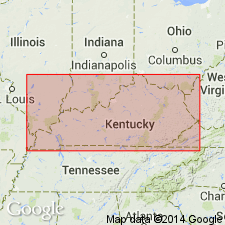
- Usage in publication:
-
- Rose Run Sandstone Member
- Modifications:
-
- Named
- Dominant lithology:
-
- Sandstone
- AAPG geologic province:
-
- Appalachian basin
Summary:
A thick well-developed quartzose sandstone at the top of lower sandy unit of the Chepultepec. Thickness 68 ft in well on Rose Run Iron Co. property. Age is Early Ordovician. Name credited to L.B. Freeman (1949: AAPG Bull. 33, no. 10, p. 1655-1681).
Source: GNU records (USGS DDS-6; Reston GNULEX).
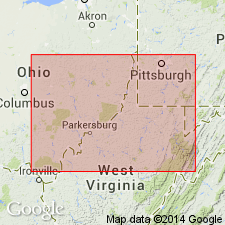
- Usage in publication:
-
- Rose Run Sandstone*
- Modifications:
-
- Revised
- Age modified
- Areal extent
- AAPG geologic province:
-
- Appalachian basin
Summary:
In cross section E-E', upper sandy member of Gatesburg Formation in WV continues into OH and is assigned to the Rose Run Sandstone, following usage of Janssens (1973). Age is Late Cambrian as it correlates with Gatesburg, based on trilobites. May be Early Ordovician based on conodonts in basal part of equivalent Chepultepec Dolomite.
Source: GNU records (USGS DDS-6; Reston GNULEX).
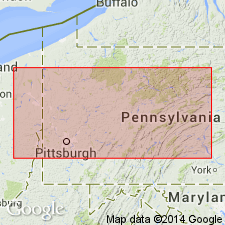
- Usage in publication:
-
- Rose Run Sandstone Member*
- Modifications:
-
- Revised
- AAPG geologic province:
-
- Appalachian basin
Summary:
The Rose Run is revised to the Rose Run Sandstone Member of the Knox Dolomite in the subsurface of OH. The rank of the Rose run is reduced to member status because dolomite of the Knox Dolomite occurs both above and below the sandstone attributed to the Rose Run. Unit correlates with the upper sandy member of the Gatesburg Formation and is considered of Late Cambrian age.
Source: GNU records (USGS DDS-6; Reston GNULEX).
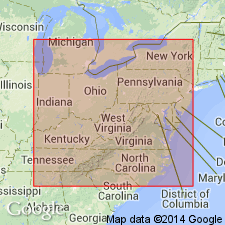
- Usage in publication:
-
- Rose Run Sandstone*
- Modifications:
-
- Age modified
- AAPG geologic province:
-
- Appalachian basin
Summary:
In OH, Rose Run Sandstone is Early Ordovician, based on Janssen's work. In KY, the Rose Run is Late Cambrian based on the work of Freeman (1949) who noted that the Rose Run was probably the southern extension of the Trempealeau or Franconia sands (Late Cambrian).
Source: GNU records (USGS DDS-6; Reston GNULEX).
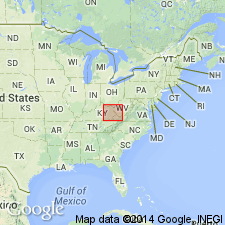
- Usage in publication:
-
- Rose Run Sandstone*
- Modifications:
-
- Revised
- AAPG geologic province:
-
- Appalachian basin
Summary:
Revised the Rose Run Sandstone in KY as part of the Knox Group in the Waverly arch and Ohio-West Virginia hinge zone as shown in section G-G'. Overlies the Copper Ridge Dolomite of the Knox Group and underlies undifferentiated dolomite of the Knox Group. Unit correlates with the upper sandstone member of the Copper Ridge Dolomite in the Rome trough and in the Valley and Ridge province of WV and VA. The Rose Run is of earliest Ordovician age.
Source: GNU records (USGS DDS-6; Reston GNULEX).
For more information, please contact Nancy Stamm, Geologic Names Committee Secretary.
Asterisk (*) indicates published by U.S. Geological Survey authors.
"No current usage" (†) implies that a name has been abandoned or has fallen into disuse. Former usage and, if known, replacement name given in parentheses ( ).
Slash (/) indicates name conflicts with nomenclatural guidelines (CSN, 1933; ACSN, 1961, 1970; NACSN, 1983, 2005, 2021). May be explained within brackets ([ ]).

